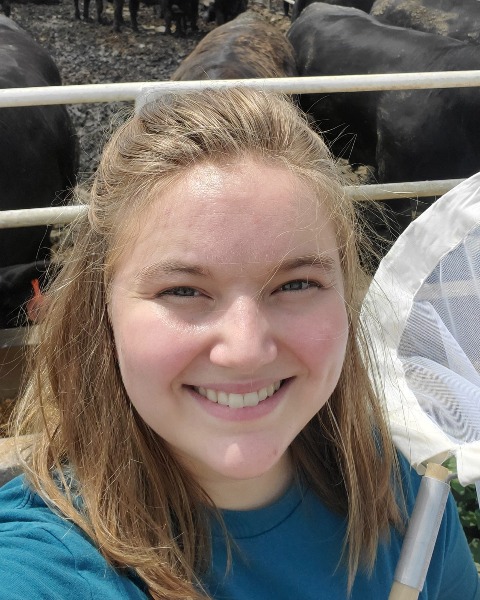Poster Display
Medical, Urban, and Veterinary Entomology
D3323: Early season alternatives for horn fly management in stocker cattle

Victoria Pickens (she/her/hers)
Graduate Research Assistant
Kansas State University
Manhattan, Kansas- MM
Megan McGraw (she/her/hers)
Doctorate of Veterinary Medicine Candidate
Kansas State University
Manhattan, Kansas - CO
Cassandra Olds
Assistant Professor
Kansas State University
Manhattan, Kansas
Presenting Author(s)
Co-Author(s)
Horn flies, Haemotabia irritans irritans (L.), are a significant pest of pastured cattle. As obligate blood-feeders, adult flies take multiple blood meals throughout the day and rarely leave their host. Horn fly feeding can negatively affect cattle weight gain, feed efficiency, and milk production, in turn decreasing economic gains. Management strategies for cow-calf systems generally recommend treatment of horn flies once numbers reach 200-300 flies per animal, the level at which numbers significantly impact animal production. However, due to the short period of intensive grazing typical of stocker cattle (3-5 months), this technique is not practical for stocker cattle production systems. This study investigated two early season horn fly management strategies (insecticide application and prescribed burning) of stocker cattle grazed in the Kansas Flint Hills. Insecticide treatment with an organophosphate ear tag or macrocyclic lactone injection significantly reduced horn fly populations resulting in a net profit of approximately $9.00 per head, while annual prescribed spring burning of grazing pasture increased profit by $24.00 per head compared to summer or fall grazing. In both cases, horn fly numbers only crossed economic injury levels (EIL) later in the study period. As such, we suggest that the EIL for stocker cattle is lower than for mature animals and early season fly intervention should be applied to stocker cattle to maximize gains and profitability.

.png)
